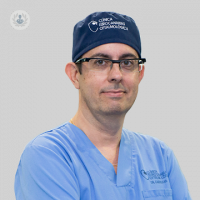5 Key aspects of the falls
Written by:
What symptoms have cataracts? How do we differentiate from other diseases?
Cataracts cause a decrease in vision, and in fact represent the most common cause of reversible blindness in the world. In the initial stages the patient may notice more subtle symptoms such as discomfort with light, glare or an alteration in the perception of colors.
Cataracts are diagnosed at a basic eye exam, and will be the ophthalmologist who determine whether the diminished vision is due to this or other reason
 Is it possible to prevent cataracts in some way?
Is it possible to prevent cataracts in some way?
There are some general tips that may be useful as using proper sunglasses, control diabetes ... and especially the periodic review, where the ophthalmologist will determine the best time to operate. The current trend is to intervene when it is not too advanced
What is their cause?
Cataract is the clouding of the lens, the natural lens of the eye that allows us to focus images on the retina. There are different types of cataracts: congenital, traumatic, associated with metabolic diseases such as diabetes, certain drugs such as cortisone ... although the most common is that which occurs in relation to age.
What is your surgery? What progress there has been in treatment in recent years?
Surgery is the only treatment to remove cataracts. Its realization is characterized as one of the safest surgeries human body.• It is a quick procedure lasts about 15 minutes.• Local anesthesia is used, drops and is absolutely painless.• one microincision is performed to remove the cataract and between 1 and 2 mm. Subsequently, the capsule surrounding the lens is opened, the layers are separated and the latter cataract is fragmented to subsequently aspirate the fragments. Currently this procedure can be performed by traditional method using ultrasound or laser technique, which is the latest advance in cataract surgery and increasing the accuracy and safety.• an intraocular lens will act as an artificial lens and already come with graduation had the patient, so that while the cataract is removed can correct nearsightedness, hipemetropía astigmatism and presbyopia is implanted as monofocal lenses are used, multifocal or toric• No stitches or bandages required.• No entry required by the patient; It is fully ambulatory.
How should the patient perform recovery?
Recovery is almost immediate. The patient can start making a normal life from the day after the intervention, but must follow a treatment with eye drops ophthalmologist will prescribe and subject to periodic reviews. About a month after the surgery and can be discharged.
Edited by Roser Berner Ubasos


